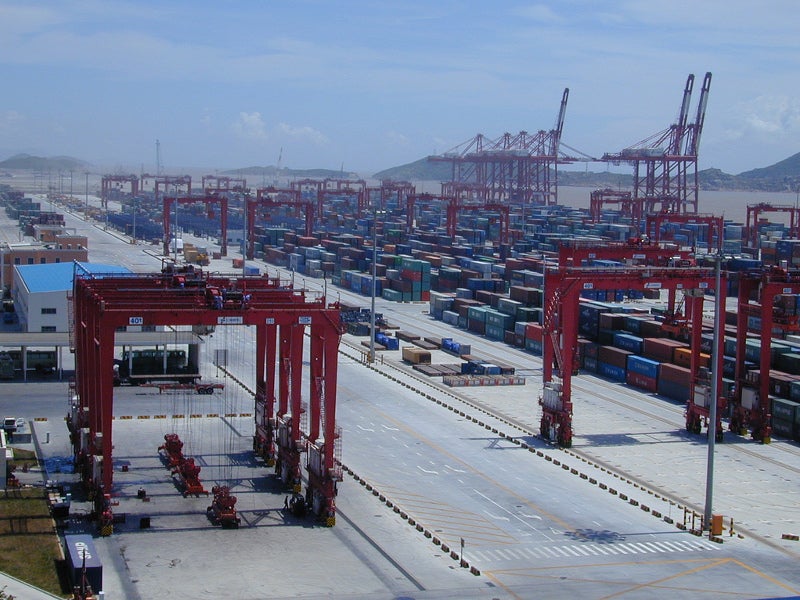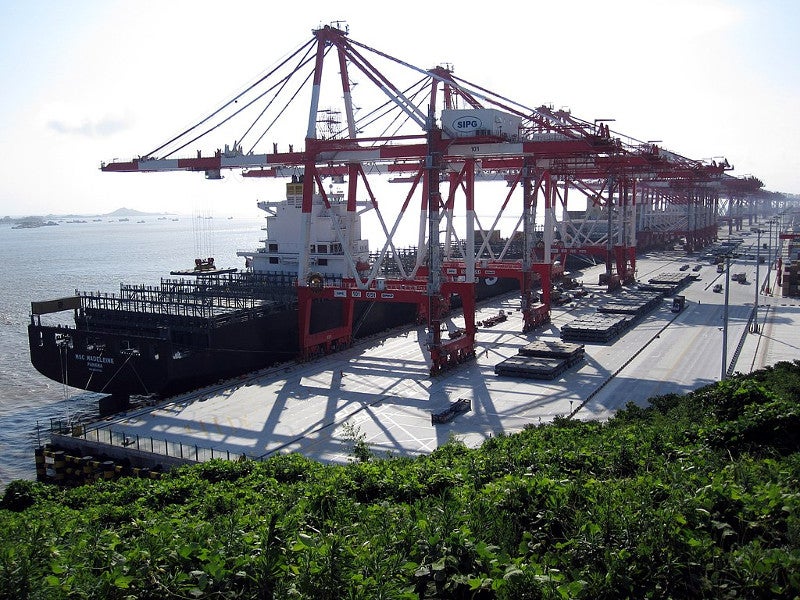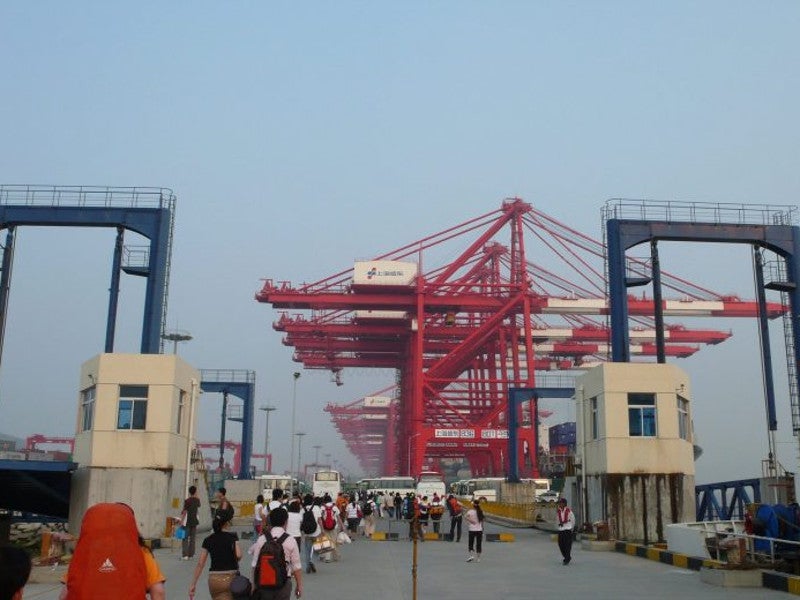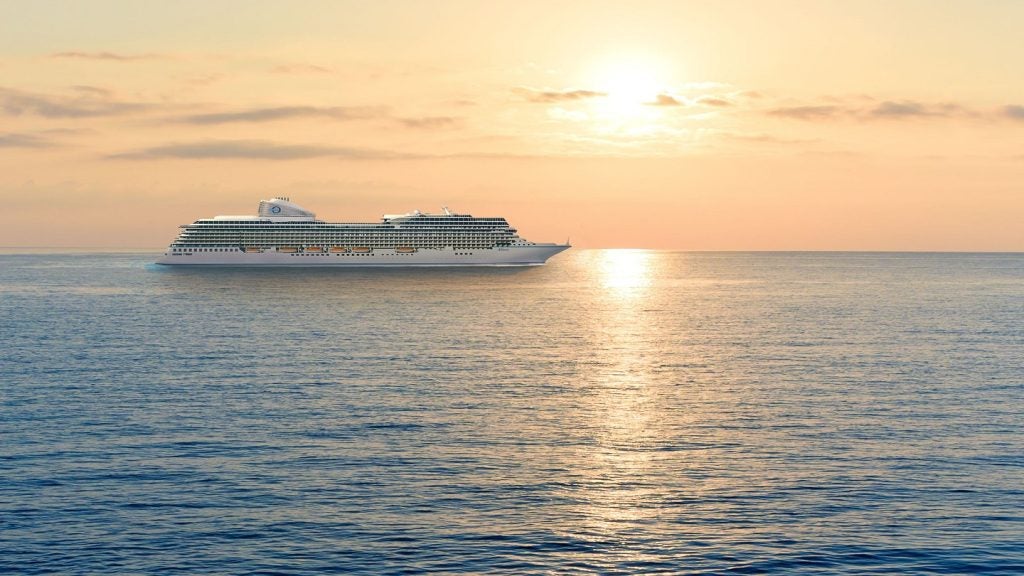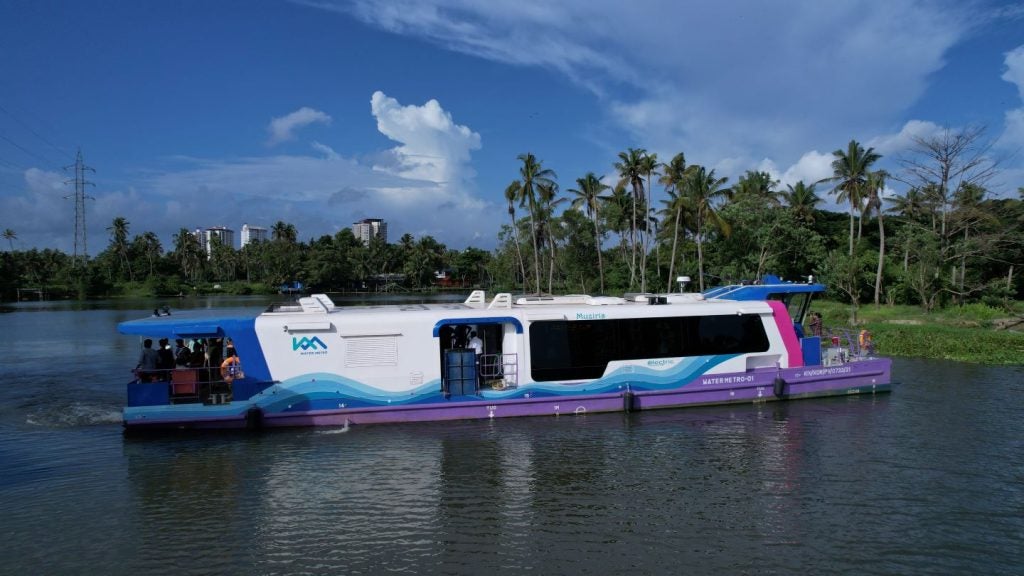The Port of Shanghai is the busiest port in the world in terms of cargo tonnage and comprises a deepsea port and a river port.
Located in Shanghai, China, the port covers an area of 3,619.6km² at the mouth of the Yangtze River. It is situated in the middle of the 18,000km-long Chinese coastline. The Shanghai port is considered the world’s fastest-growing economy.
Shanghai International Port Group (SIPG) is responsible for operating and managing the public terminals in the port. SIPG handles domestic, national and international cargo transportation. It is also responsible for maintaining, manufacturing and leasing containers, as well as building, managing and operating port facilities.
The Shanghai port handled 43.6 million twenty-foot equivalent unit (TEU) containers and 542.46 million tonnes of cargo in 2019.
Port of Shanghai background
The Port of Shanghai, which originally existed as Shen or Hudu between the fifth and seventh centuries AD, was given official city status in 1297 by the Yuan Dynasty. In 1684, ocean-going vessels were allowed to use the port courtesy of the Quing Dynasty, which helped the port to collect customs duty for all foreign trade and by 1735 it became the most significant seaport in the Yangtze region.
In 1842 the port opened for international trade and became a treaty port under the Treaty of Nanjing. It became more approachable when foreign countries were relieved of local rules and regulations after the Treaty of the Bogue in 1843 and the Sino-American Treaty of Wangsai in 1844.
After the Second Sino-Japanese War, the Japanese became an important community and established the port’s first factory.
The port came under the control of China in 1949, a development that dramatically slowed down foreign trade at the port. The port saw economic and building booms when it was permitted to implement economic reforms in 1991 by the central government.
Port of Shanghai facilities and services
The Shanghai port has two bulk cargo terminals and three break-bulk terminals, which are located in the Luojing, Wusong and Longwu areas. The cruise terminal covers an area of 160km2 and has an 850m-long quay wall and four large berths. It has the capacity to handle one million passengers annually.
The port offers various services, including pilotage, tugboat, shipping tally, agency and port information technology service.
Port terminals
Wusongkou, Waigaoqiao and Yangshan are the three main container port areas of the Port of Shanghai. The container terminals have over 13km-long quay length, 43 berths and 156 quay cranes.
The Wusongkou area is managed by Shanghai Container Terminals Company (SCT), a joint venture of Hutchison Port Holdings Limited (HPH) and SIPG. Zhanghuabang Terminal, Jungong Road Terminal and Baoshan Terminal are the three container terminals operated by SCT. The facilities provided by the company include container cleaning and management, storage and transport, inland goods storage, and electronic data interchange.
The Waigaoqiao area is operated by Shanghai Pudong International Container Terminals, SIPG Zhendong Container Terminal Branch, Shanghai East Container Terminal Company and Shanghai Mingdong Container Terminals Limited. Shanghai Pudong operates in 500,000m² and has 147 container handling equipment and machinery, 36 RTG, ten quay cranes, 73 container trucks and 11 forklifts. Shanghai Mingdong facilitates container handling, storage and transfer. Other works carried out by the company include maintaining, cleaning and stripping of containers.
Shanghai Shengdong International Container Terminal Company is responsible for operating Yangshan Deepwater Port. The port’s activities are carried out by 34 container quay cranes and 120 RTG. The terminal can handle containerised cargo of 2.2 million TEU. The port is also facilitated by non-container terminals located on the Huangpu River. These terminals act as distribution centres for the remote areas of the port and contribute to the financial development of Yangtze River Valley.
Port expansion
Due to insufficient water depth at the port’s mainland, Yangshan Deepwater Port was developed in four phases. The deepwater port, which is located in the East China Sea, is 30km from the mainland and a 32.5km-long bridge connects it to the mainland.
Phase I terminal, which was opened in December 2005, was completed at an investment of $7.5bn. The terminal operates at a water depth of 16m and has five berths. In the first year of its construction, the terminal handled 3.1 million TEU.
Phase II of the terminal was built with an investment of $7bn and opened for operation in December 2006. The terminal, which is capable of handling 2.1 million TEU, uses four berths. Phase III began its operations in 2008.
Phase IV of the terminal commenced its operations in December 2017. It is the world’s largest and advanced automated container terminal, which handled two million TEU in its first year of operation.
Saab will renew the vessel traffic management information system (VTMIS) by May 2020. It will include replacement of the existing radar and communications systems, two traffic centres and a new supervisory centre.

